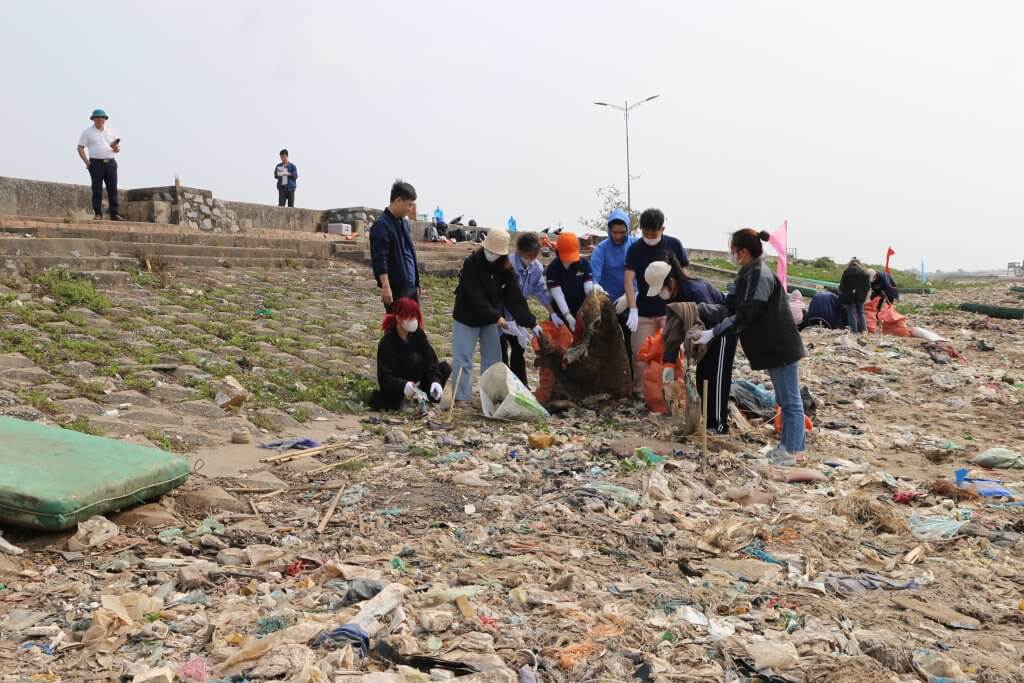Blog by Vo Thu Ha, Student in the Department of Biotechnology, Chemistry and Environmental Engineering, Phenikaa University, Hanoi
On 11th March 2023, I had the chance to join the waste audit activity in Giao Hai coastline, Giao Thuy district, Nam Dinh province organized by the 3SIP2C project. This activity showed me the importance of environmental protection and our responsibility to maintain a blue, clean, and beautiful marine environment.
Before the event, I had never thought that the Nam Dinh coastline suffered such terrible pollution. When we reached the waste audit area, I was so shocked to see waste everywhere. The beautiful coastline had become blighted by the appearance of plastic pieces, bottles, and bags.
Fortunately, the scene didn’t exist for a long time with the help of the many passionate people who came to do the beach cleanup. I was very impressed by their solidarity and dedication. Despite the heat and their busy lives, the volunteers spent their precious morning participating in this activity.
Forty (40) students attended the waste audit, and we were divided into five groups. Twi additional students worked as the group leaders and seven project staff joined the activity. We divided the beach area into four tide levels: A, B, C, and D. Each tide level was then divided into fifty (50) squares with an acreage of two-by-two meters (2x2m). Each of our volunteer groups then carried out a waste audit at a random square for each tide level. By the end of the activity, we had cleaned up twenty squares of Giao Hai Beach.
The audit results showed that 59.3% of the plastic waste collected is from daily activities, 14.1% is from the seafood industry, and 26.6% is from others in which fabric materials were the highest proportion – 20.6% from all “others”. Lots of fabric materials today are made from plastic composites. Plastic waste generated from daily activities (mainly plastic bags and food covering) could be from the land, the fishing port, or from fishing activities at the sea. On average each square meter on Giao Hai Beach had 7.4kg within 84 pieces of waste on the surface. However, waste is not evenly distributed on the beach. The waste labels are mainly from five major manufacturers.
The waste audit activity in Giao Hai Beach offered a huge lesson for me, that each of our small acts can lead to big impacts on the environment and the marine ecosystem.
I want to send the message to everyone, especially young people, that when combined everyone’s tiniest activities can change the whole world and bring a better life for all. I hope that I can spread this message to more and more people so that everyone can together protect the environment.

